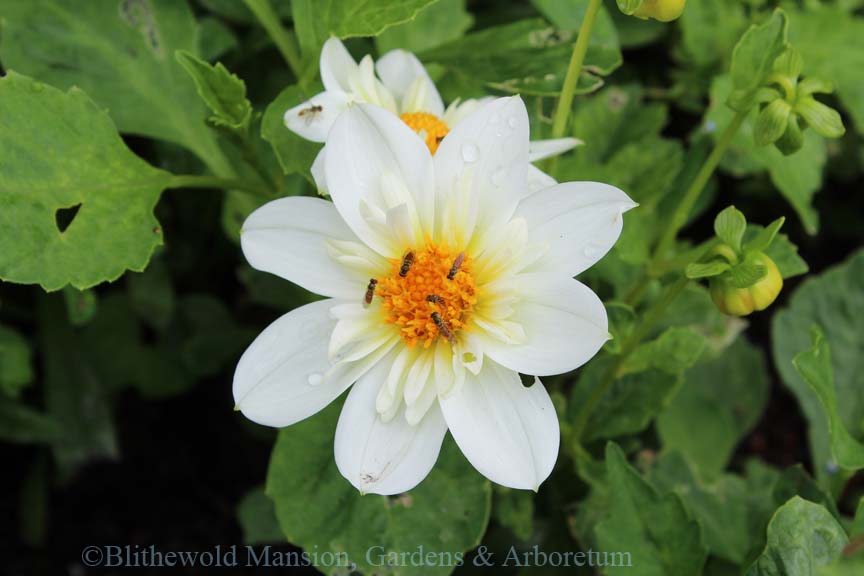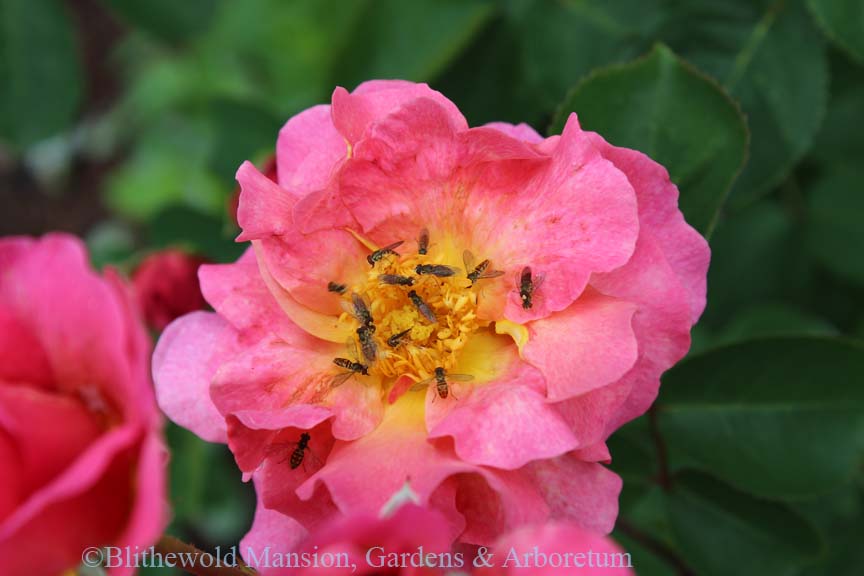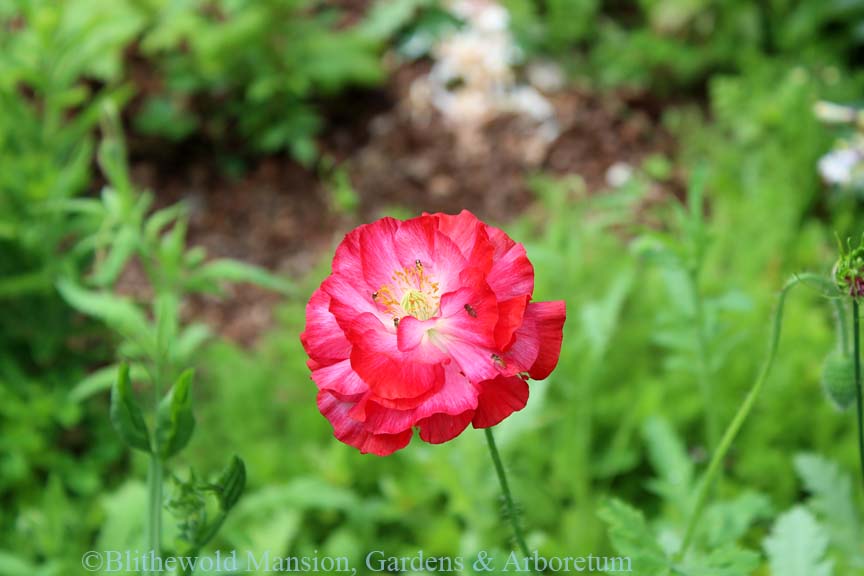Pollinators
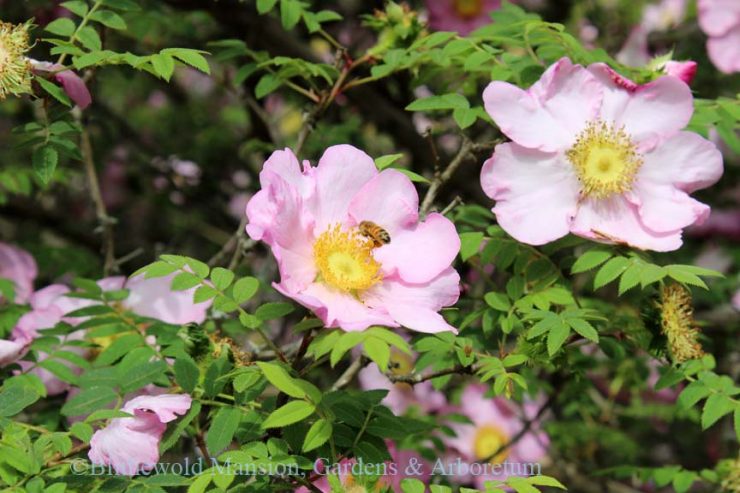
It’s National Pollinator Week and I wanted to take a minute to talk about how connected the gardens at Blithewold are to all wildlife. We focus on growing beautiful gardens to inspire you, but we are also a part of the larger picture – our gardens provide food and habitat for many insects and animals. I encourage you to notice all the life that interacts with the plants around you in your own garden and wherever you go.
Because our gardens are home to wildlife, we care for our plants organically. We want to feed the flowers so they are full and beautiful, but we don’t want to damage the important animals, insects, and microbes that live on and near our plants.
Here are a few of the pollinators I was able to capture on film this week in the gardens
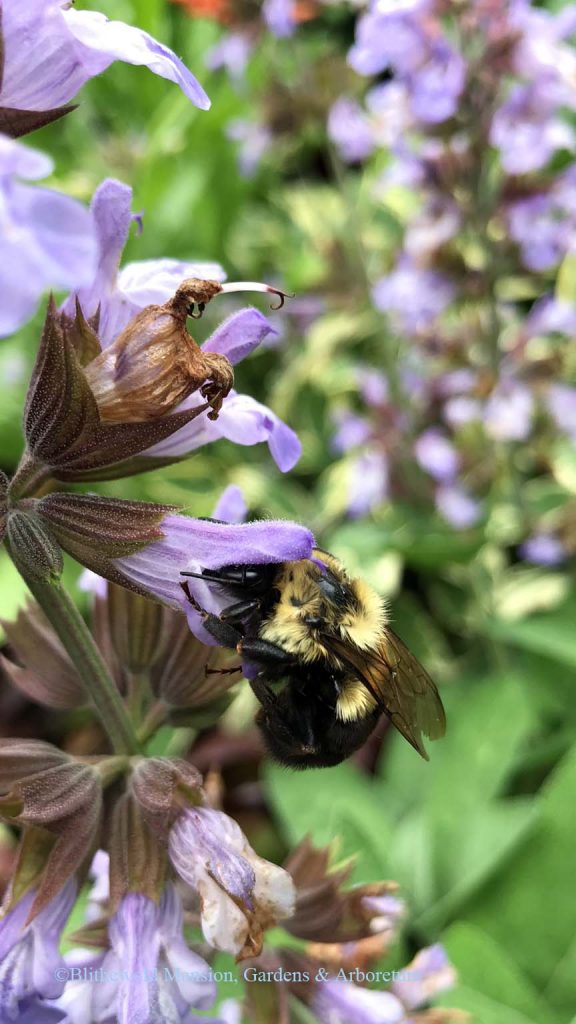
Bumblebee on Salvia officinalis 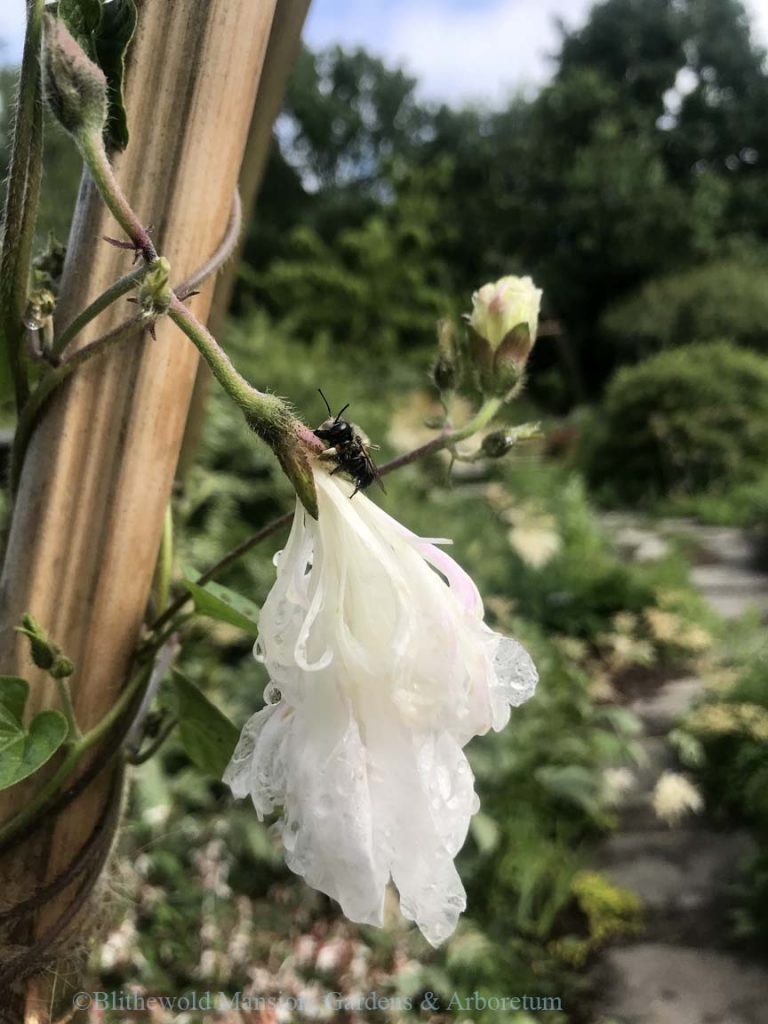
Bumblebee resting on Morning Glory ‘Gypsy Bride’ 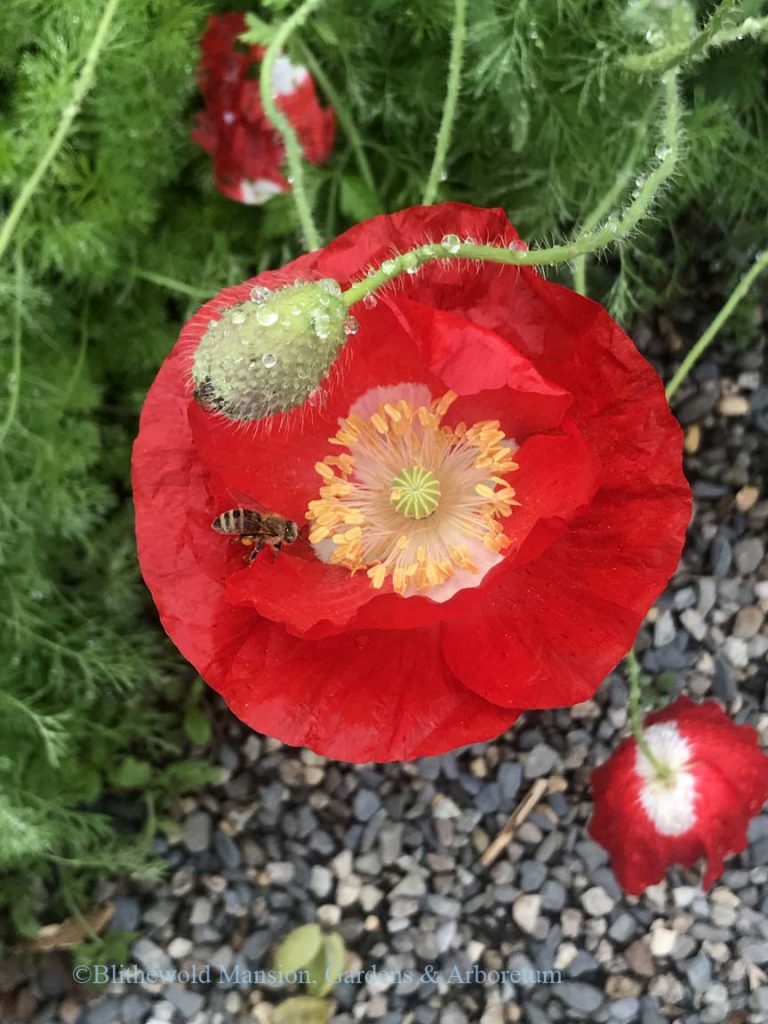
Honey bee on Shirley poppy ‘American Legion’ 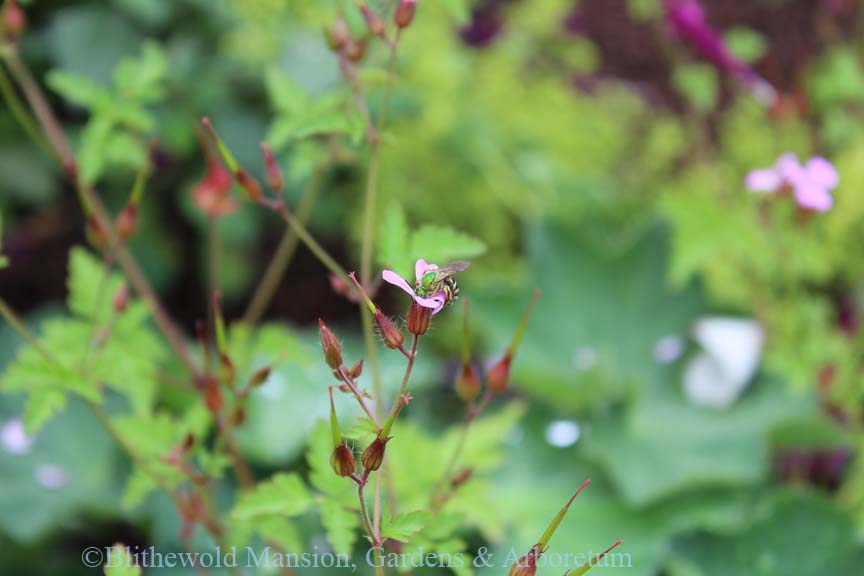
Sweat bee on geranium
We are currently enjoying an influx of hoverflies throughout the property. For those readers interested, we believe this type of extra tiny hoverfly is known as a Margined Calligrapher (Toxomerus marginatus). This influx seems to have been brought on by the wet spring weather, which provides the perfect environment for this tiny pollinator to multiply. Check out the hoverflies on the poppies, dahlias, and roses.
This might be the conclusion of National Pollinator Week but the need to care for pollinators continues year round. We may only notice them when they feed on the flowers in our gardens, but they need host plants and habitat all year round. Two key actions you can take are: (1) garden organically and do not treat your lawn with chemical fertilizers or pesticides, (2) choose native plants that flower early in the spring and late in the fall when pollinators are most in need of a food supply. Native plants are natural hosts to our native pollinators.
Happy gardening and happy pollinator week!

